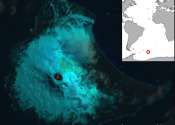New multispectral curved compound eye camera developed with ultra-large field of view
Multispectral imaging technology has found wide applications in remote sensing, as it has a relatively high spectral resolution. But the existing technologies have many shortcomings such as low system integration, high complexity, ...









